Memories are powerful things, specially those from early years of your life. Some people, like myself, cling to their childhood memories as they seek to find their roots, or their identity. Whatever is one looking for - cherished and dreaded moments - traveling down the memory lane is always fun. I like to remember the sweet times that I enjoyed, the occasional embarrassing moments that I wished never occurred, moments that I wished lingered for a little while, and so on. I still remember my days in Khajuri as a three year old boy visiting my mother’s side of the family for the first time. It was not really the first time I had visited my grandparent’s family, I was there as a two-month old baby, but this I don’t remember. So you see, memory lanes can hit a dead end. Now, some people may ask how come I remember things that happened so long ago in my life. I do not claim to remember everything, what I remember are snippets of some visual imageries. When I returned later as a 13 year old, things that I saw in Khajuri confirmed that my earlier memories were fairly accurate.
I remembered the location of my grandparent’s house (not the details of the house though). The house was perched above from a pond; a narrow path led to the stairs (brick-paved) to the pond. On top of the stairs was the southern entrance to the templeyard; access to the main temple was through a mango orchard. The pond was popularly known as Devata Pokhari (God’s Pond). Behind the house (to the east) was a big Jamun tree (Syzygium cumini), an evergreen tropical flowering tree native to Bangladesh, India, Nepal, Pakistan and Indonesia. The Jamun fruit (a small, purple colored plum) is simply delicious. These images were implanted in my memories so strongly that the ponds, temple and the tree were the three major things I was expecting to see in my future visits to Khajuri, which would occur only in 1976, more than ten years after my first visit there. Everytime I heard something about Khajuri, the first thing that came to my mind were the ponds, the Jamun tree, and the dirt path leading to my grandparents’ house. It’s interesting that the surroundings in Khajuri fascinated me. It seemed the perfect place for a kid to grow up – swimming in the ponds, eating Jamun and mangoes, kicking dirt, and living carefree. I had no memories of the train ride that we had to take from Janakpur (a town in the southern lowlands of Nepal) to Khajuri, but I do remember my mother’s attempts to cheer me and my younger sister during our photo session at a studio in Jay Nagar (a border town in India). My sister was crying, and was not cooperating with the photographer, so he gave her a small doll to hold. I don’t remember how long we spent at the studio, but he was able to take our photo (hand painted in color!). I also remember the strong smell of urine on the street on our way to my aunt’s (my mom’s eldest sister) apartment in town. Jay Nagar is at the terminus of the Indian railway. The smell of coal and steam, coupled with the southern heat, created a strange odor in the air. It did not occur to me at that time that the air we were breathing was perhaps polluted. On the contrary, I found the smell of the coal in the air to be very pleasant.
To sum up, my early memories of Khajuri consisted of 1) physical objects: ponds, trees, temples, and 2) sensory: the strong smell of urine and coal in Jay Nagar. Overall, it must have been a pleasant visit, as I always longed to return to Khajuri.
Saturday, August 1, 2009
Subscribe to:
Post Comments (Atom)
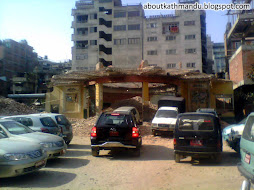





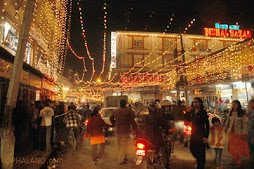


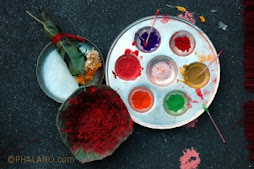




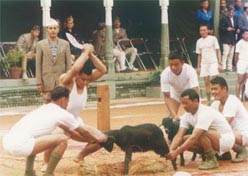




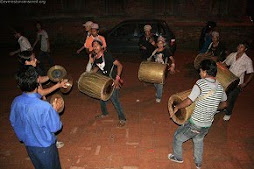
























No comments:
Post a Comment